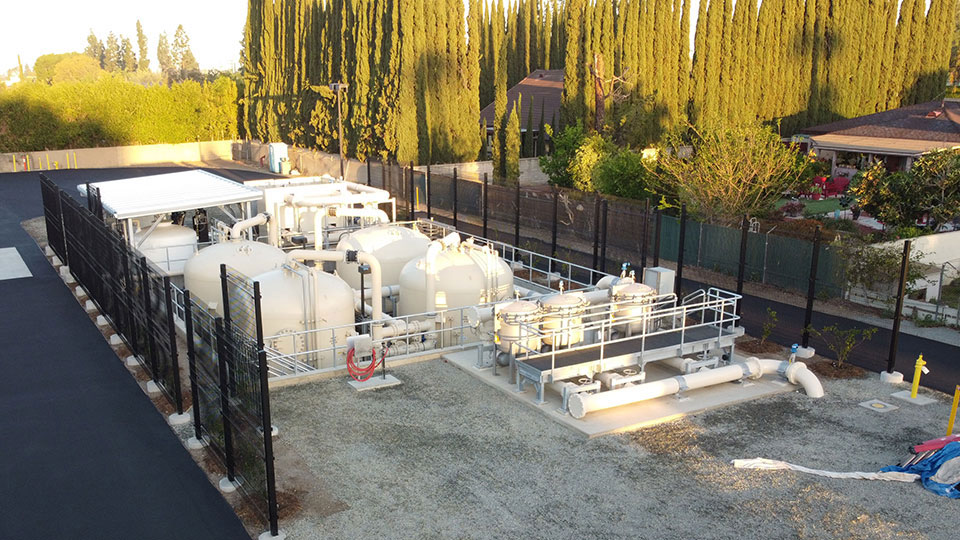Advanced PFAS Management Solutions to Protect Environment
Advanced PFAS Management Solutions to Protect Environment
Blog Article
Cutting-edge PFAS Therapy Solutions for Safer Water
The boosting frequency of PFAS contamination in water materials necessitates a crucial assessment of innovative treatment solutions. In addition, arising bioremediation strategies supply an even more sustainable technique to dealing with PFAS difficulties. pfas management.
Introduction of PFAS Contamination
PFAS contamination has actually emerged as a substantial ecological and public wellness worry. Per- and polyfluoroalkyl substances (PFAS) are a group of artificial chemicals understood for their persistence in the setting and human body, leading them to be frequently described as "for life chemicals." These substances have actually been extensively made use of in numerous industries, consisting of firefighting foams, water-repellent fabrics, and food packaging, largely because of their water- and grease-resistant properties.
The extensive usage of PFAS has actually led to their discovery in soil, water supplies, and also in the blood of humans and animals. Researches have connected PFAS exposure to numerous wellness problems, including developing results in babies, body immune system dysfunction, and numerous types of cancer. Furthermore, the ecological persistence of these substances complicates their destruction and removal, increasing worries about lasting environmental effects.
Governing bodies are significantly implementing stringent standards to monitor and minimize PFAS degrees in drinking water and various other ecological tools. As understanding of PFAS contamination grows, it has actually become vital for communities and sectors to look for reliable therapy remedies to minimize exposure and protect public wellness.
Advanced Filtration Technologies
As the necessity to resolve PFAS contamination increases, advanced purification innovations have become a crucial part in the remediation initiatives intended at removing these persistent chemicals from water resources. These technologies leverage advanced devices to properly target and capture PFAS substances, which are infamously resistant to conventional therapy methods.
Among one of the most encouraging methods is the use of granular turned on carbon (GAC), which adsorbs PFAS molecules as a result of its high surface location and porous structure. This approach has been commonly carried out in both municipal and commercial settings, showing considerable reductions in PFAS focus. Additionally, ion exchange resins have gained grip, especially created to selectively bind PFAS ions from water, hence promoting their elimination.
Membrane filtering innovations, such as reverse osmosis and nanofiltration, also reveal efficiency in PFAS removal by literally separating impurities from water - pfas management. These systems can achieve high degrees of pureness, making them ideal for alcohol consumption water applications
Chemical Therapy Advancements
Countless chemical therapy developments are being explored to successfully resolve PFAS contamination in water supplies. One promising strategy involves the use of advanced oxidation procedures (AOPs), which use powerful oxidants such as ozone, hydrogen peroxide, or chlorine dioxide incorporated with UV light to break down PFAS substances right into much less hazardous substances. This approach has actually demonstrated effectiveness in research laboratory setups, showing possible for scalability in real-world applications.
An additional cutting-edge strategy is the growth of ion-exchange materials particularly made to target PFAS. These materials can selectively adsorb PFAS substances from water, allowing for their removal throughout therapy procedures. Recent advancements have boosted the efficiency and ability of these materials, making them a beneficial option for water therapy centers.
Additionally, scientists link are examining the usage of chemical representatives like persulfate and ferrous ions to improve the degradation of PFAS in infected water. These representatives can induce chain reaction that promote the breakdown of relentless PFAS substances.
Arising Bioremediation Strategies
Recent developments in chemical treatment advancements have paved the means for exploring bioremediation methods as a practical choice for addressing PFAS contamination. Bioremediation takes advantage of the natural metabolic procedures of microbes to weaken or change toxins, making it an appealing approach for taking on persistent impurities like PFAS.
Emerging techniques in bioremediation consist of using genetically crafted microorganisms that can particularly target and break down PFAS compounds. These microbial strains are being created for their boosted degradation capacities, increasing the effectiveness of the removal process. In addition, researchers are examining the capacity of plant-assisted bioremediation, where specific plant types may uptake and sequester PFAS from contaminated soil and water.
Another encouraging strategy is the application of bioaugmentation, which includes introducing advantageous bacteria into contaminated settings to increase the degradation of PFAS. This approach can promote faster remediation timelines and enhance general effectiveness.

Regulative Frameworks and Specifications
A detailed regulative framework is essential for successfully managing PFAS contamination and making sure public health and wellness defense. The enhancing acknowledgment of per- and polyfluoroalkyl substances (PFAS) as toxic wastes has triggered various government and state agencies to create standards that control their presence in water products. The United State Environmental Security Firm (EPA) has developed wellness advisories and is working toward establishing enforceable restrictions for PFAS in alcohol consumption water.
State-level laws differ dramatically, with some states taking on stricter standards than those proposed by the EPA. These regulations typically include maximum impurity degrees (MCLs) for particular PFAS substances, monitoring requirements, and reporting responsibilities for water energies. Additionally, arising frameworks concentrate on the look at this website remediation of contaminated sites, stressing the requirement for effective treatment innovations.

Conclusion
To conclude, the development and implementation of innovative PFAS treatment remedies are essential for attending to the prevalent problem of water contamination. Advanced purification technologies, chemical therapies, and emerging bioremediation strategies collectively present a diverse approach to efficiently decrease and break down PFAS degrees. As regulatory structures remain to progress, incorporating try this web-site these innovations will be vital to protect public health and restore the honesty of contaminated water sources, eventually adding to a cleaner and more secure environment.
Report this page